Review of 'Bomb Busters,' the first Japanese-made board game to win the German Game of the Year Award. A masterpiece that allows players to enjoy a simple yet profound mystery through cooperative bomb defusing.

The board game ' Bomb Busters ' designed by Hisashi Hayashi is a cooperative board game in which all players team up as bomb disposal experts to defuse a bomb. It was the first game created by a Japanese player to
Game Introduction: Bomb Busters | Engames
https://note.com/engames/n/nc6401b5ffb0f
◆Check the contents
The packaging for Bomb Busters looks like this. The game design was done by Hisashi Hayashi of okazubrand, and the illustrations were done by Dominique Ferland.
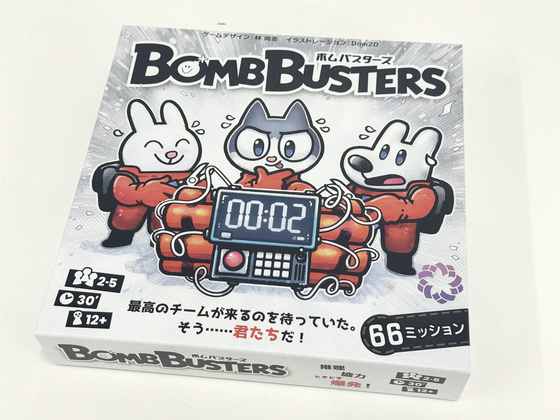
The game is suitable for 2-5 players, takes 30 minutes to play, and is intended for ages 12 and up.
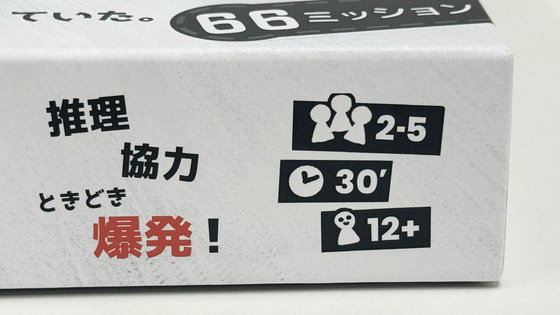
Rules manual and main board
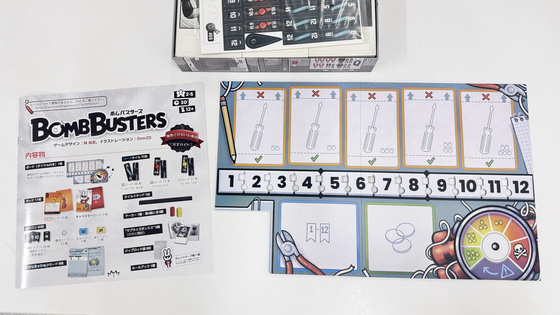
The various tokens are made of cardboard.
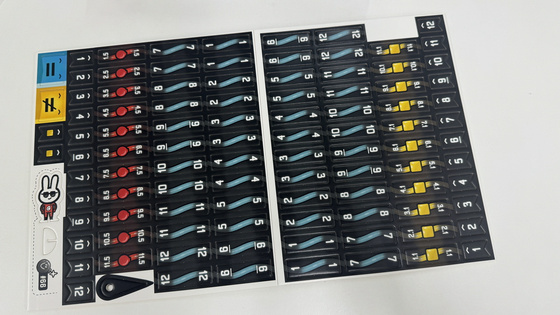
The cardboard has cuts in it so it can be easily removed without the need for scissors or a cutter.
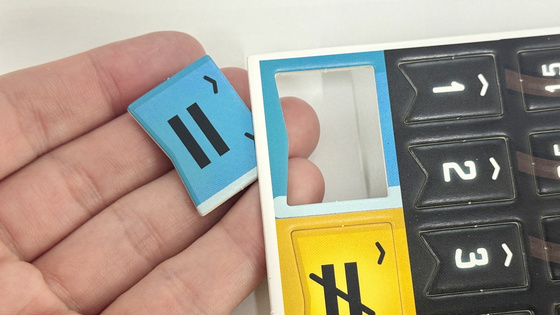
There are 48 blue code tiles.
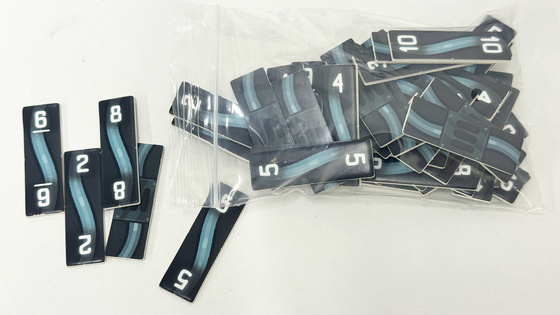
There are 11 red cords.
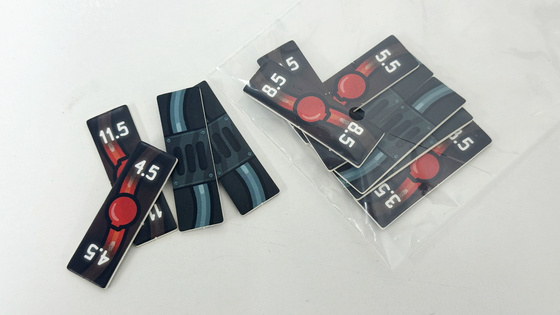
There are 11 yellow cords.
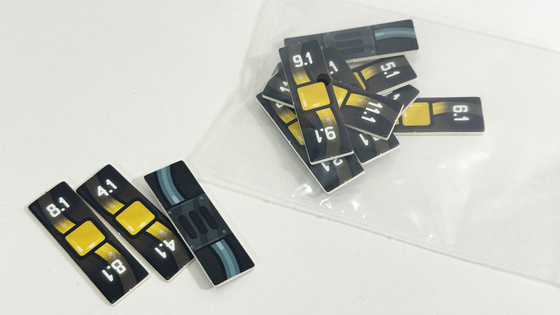
26 information tokens.
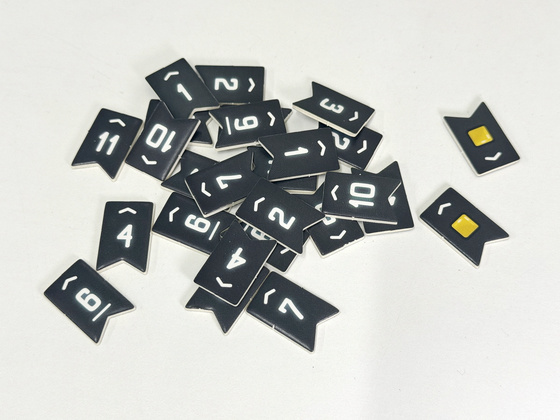
=token and ≠token.
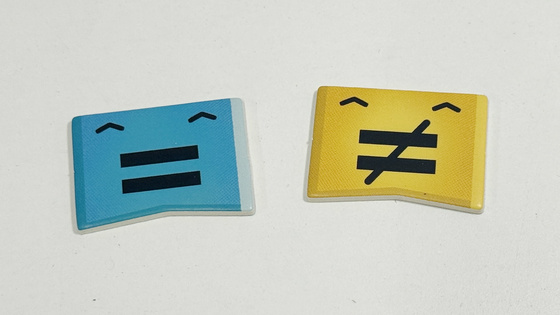
Plastic fastener.
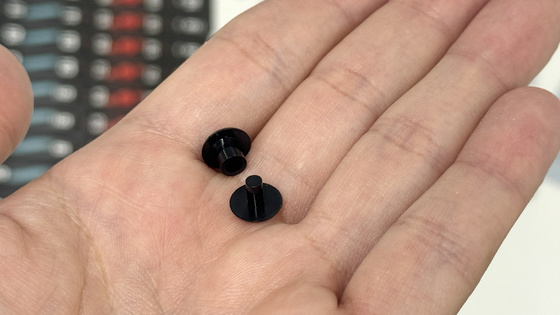
This fastener is used to secure the black dial to the meter on the board.
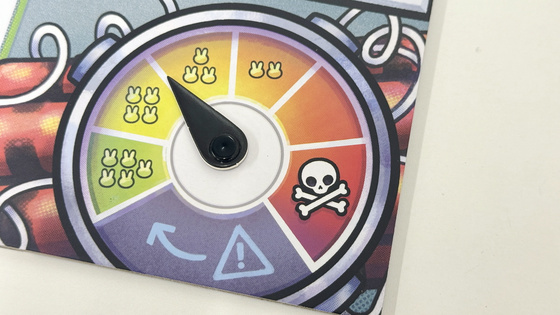
There are 8 mission cards.
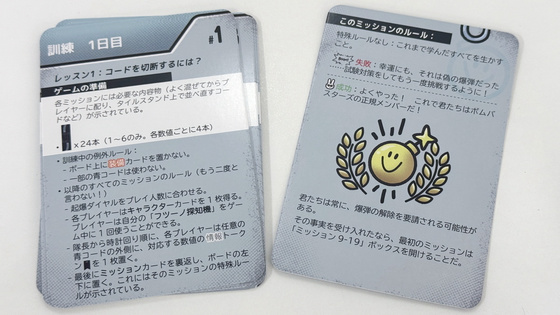
5 Surprise Boxes that contain extra mission cards, tokens, and more to open as you play.
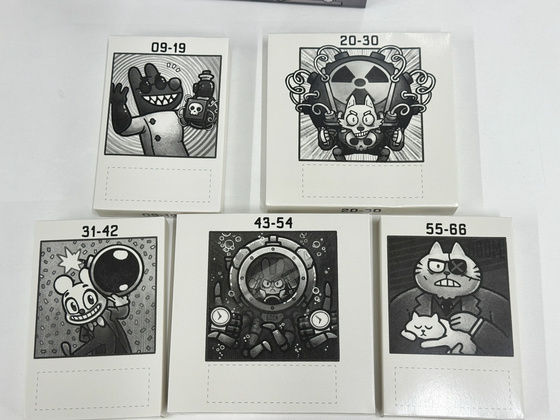
There are 12 equipment cards.
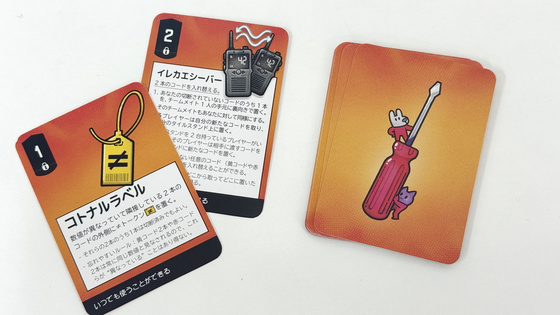
And five character cards.
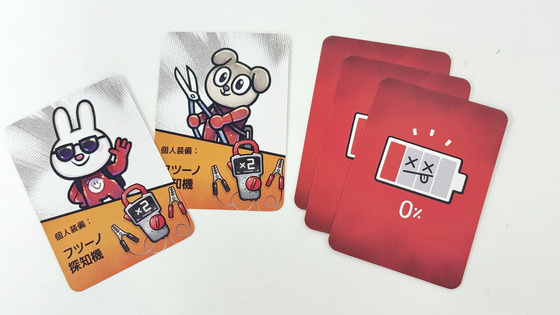
There are four yellow and three red wooden markers.
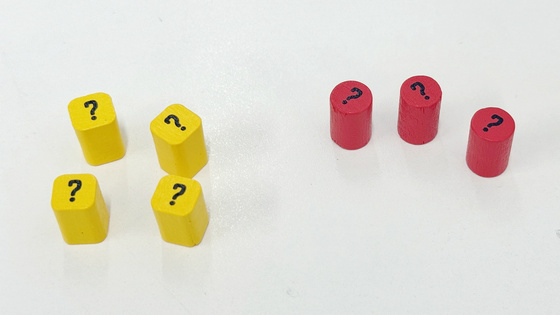
There are 12 confirmed tokens.
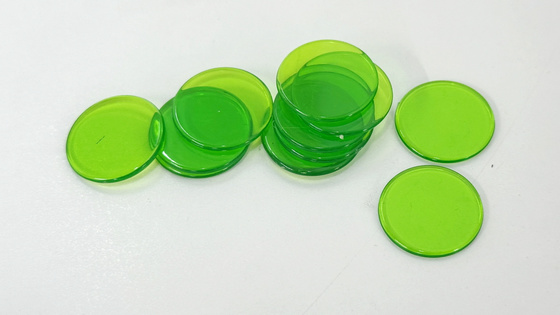
One Bomb Busters piece. This piece will be used in a certain mission.

Five tile stands.
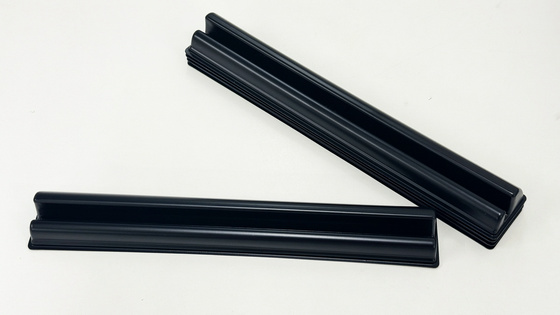
◆Game preparation
This time, four members of the editorial staff played. First, one of the four players was chosen to be the 'Captain' and receive the Captain's character card. The remaining three players then each chose one character card of their choice.
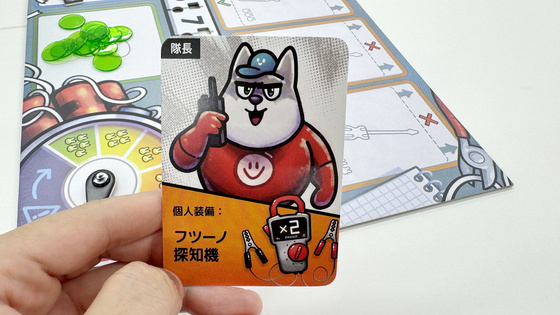
Place information tokens and confirmation tokens at the bottom of the board game.
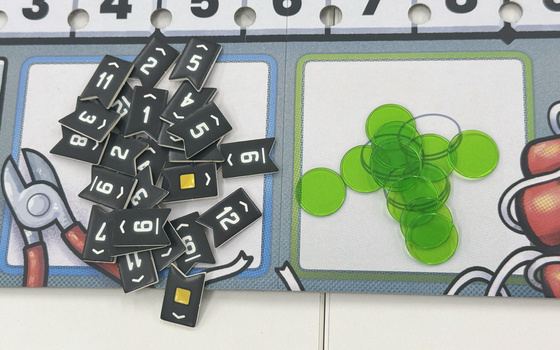
Adjust the meter dial to the number of players. Since we are playing with four players, we set the dial to the following position.

Next, the team leader picks up a mission card and reads out the mission details. There are eight initial mission cards that are not included in the surprise box, and the rule manual states that 'You do not have to play the missions in order (but we strongly recommend doing so!),' so this time we started with the 'Training Day 1' card.

The mission card that was read aloud is placed face down in the bottom left corner of the board as shown below.

Next, prepare the code tiles. There are four blue code tiles with numbers 1 to 12, and for this 'Training Day 1,' since this is the first training, we will only use blue code tiles 1 to 6.
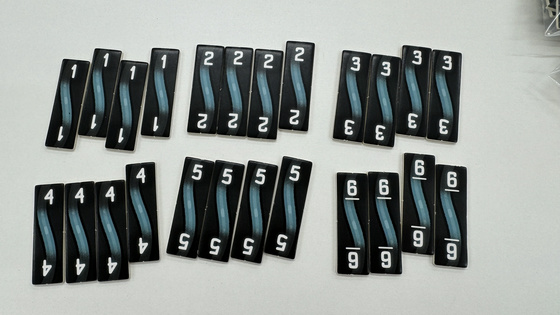
The blue code tiles are shuffled face down and taken one by one, starting with the captain and going clockwise. Since it is difficult to shuffle the blue code tiles on a table, I found it easier to prepare a separate cloth bag that cannot be seen through, place the blue code tiles in it, shake it well, and then take one from the bag.
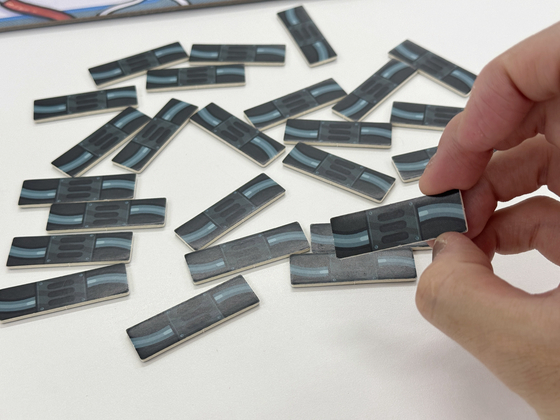
Arrange the code tiles you have taken on the tile stand. At this time, only you can see the numbers, and you must arrange them in ascending order from left to right.

Next, take one information token from the board.
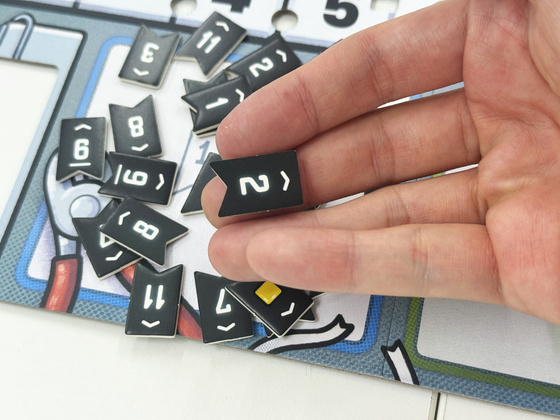
An information token is placed in front of a tile with the same number as your own. For example, in the image below, it is immediately obvious to other players that the tile surrounded by the red frame is a 4. Furthermore, since the tiles are arranged in order of numerical size, other players can see that 'the tile to the left of the red frame is 4 or greater, and the tile to the right of the red frame is 4 or less.' In other words, information tokens are a valuable source of information that can help your opponent guess the number on your tile.
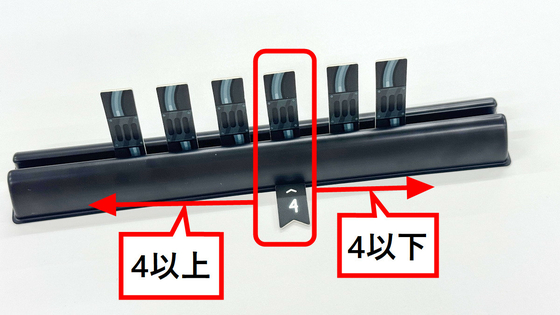
It looks like this when you're ready. Since the game system involves carefully looking at your opponent's hand, I felt that a space of about 80cm in length and width was sufficient for playing.

◆ Play a 4-player game
The rules of the game are very simple: players reveal tiles by guessing the number of the tile in their opponent's hand, and the game is over when all players have revealed their tiles.
Turns proceed clockwise starting from the captain. On their turn, players can either 'Cut the Cord with Two Players' or 'Cut the Cord with One Player.' For 'Cut the Cord with Two Players,' if a player thinks that a number in their hand is in a card in someone else's hand, they must guess the number by pointing to that card. If they guess correctly, the player who guessed reveals the tile.
For example, a player points to another player's tile and declares '4!' Since there is a '4' information token in front of this tile, it is clear that it is 4.

The player who was pointed out revealed the '4' tile.
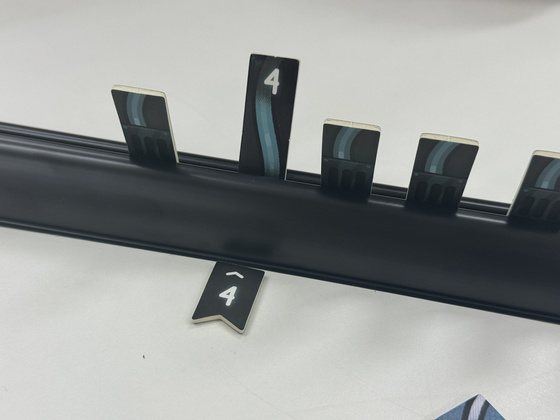
The player who pointed this out then reveals a '4' tile from their hand. This means that 'two 4 cords have been cut.'
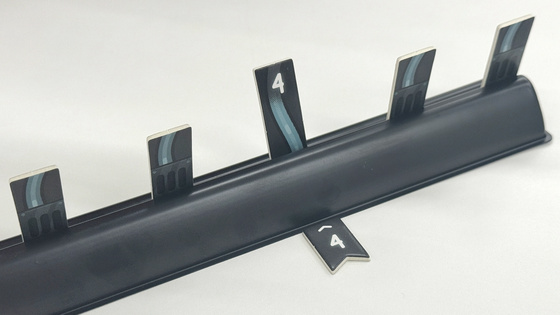
However, if the guess is incorrect, the player who is told answers 'No,' and places an information token outside the indicated code to reveal the code's true value.
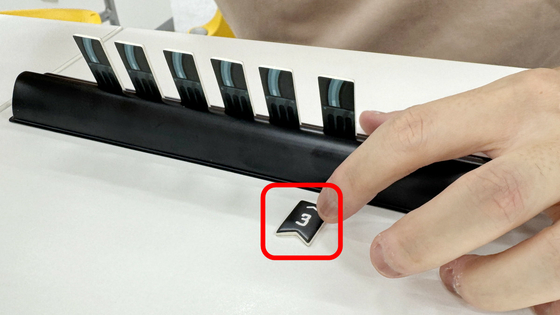
If you fail again, move the dial on the board clockwise by one.
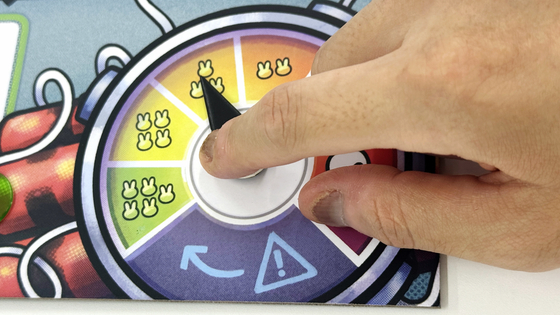
If the dial reaches the skull on the far right, the bomb will not be defused and the game will be over.
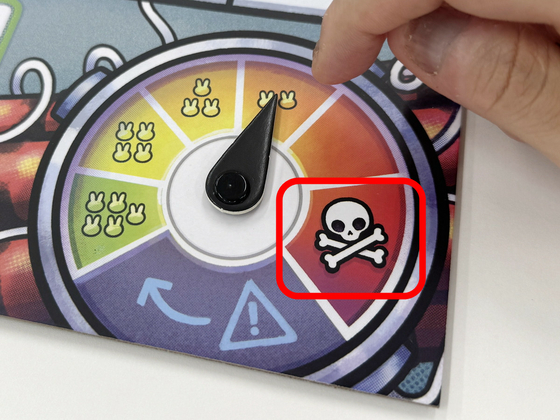
There are four code tiles for each number. If two of the four have already been cut and a player has two remaining code tiles, they can cut those two on their turn. This is a case of 'cutting the code by one person.' Below, two '3' code tiles have already been cut, and a player who has two remaining '3' tiles in their hand cuts them on their turn.
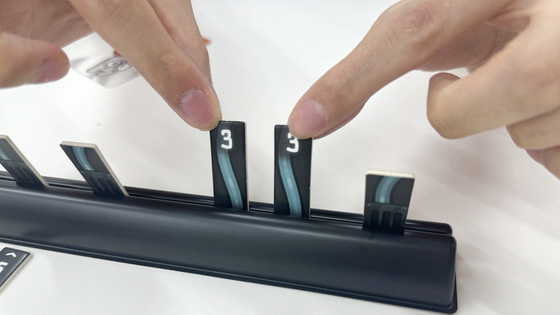
Now all four '3' code tiles have been removed. The '3' code has been released, so place a confirmation token on the '3' square on the board.
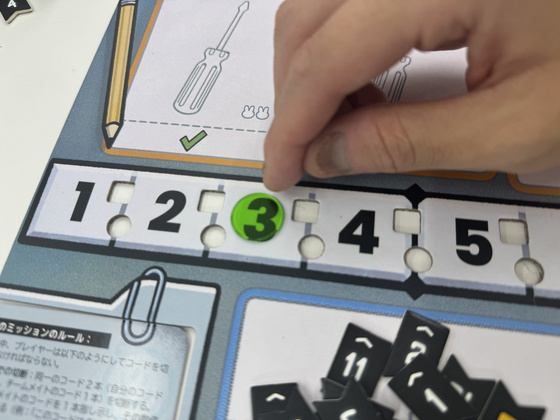
What's important is the number of remaining codes that haven't been unlocked and the relative positions of the codes that your opponent can see. For example, below is a hand with the numbers '1, 1, 2, 4, 6' arranged, with only the '4' revealed to your opponent. Your opponent can see that the three cards next to the '4' are 4 or lower, but they don't know what numbers they are specifically. However, since all the '3' codes have been unlocked at this point, they can determine that they are at least 1, 2, or 4. In this way, you need to deduce the positions of the code tiles revealed in your opponent's hand by comparing them with your own hand and the situation on the field.

During the game, players are prohibited from discussing the codes in someone's hand by alluding to numbers, reminding others of previous turns, sharing their own guesses, or stating their hypotheses aloud. Therefore, players are not allowed to discuss specific numbers at all; they must use their own internal reasoning. However, players are always free to discuss general tactics, equipment use, and special rules, and to advise others to use the Futuno Detector or other equipment. For example, the character cards distributed to each player feature an item called the Futuno Detector.
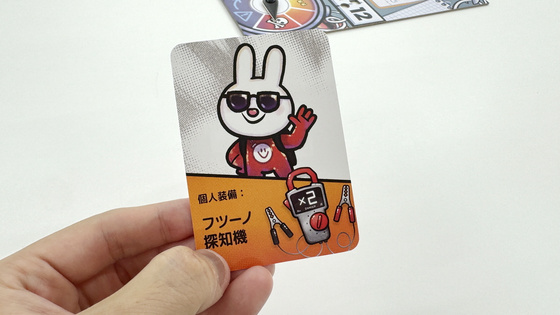
You can use this 'Futsuno Detector' by declaring it during your turn. However, you can only use it once per game.
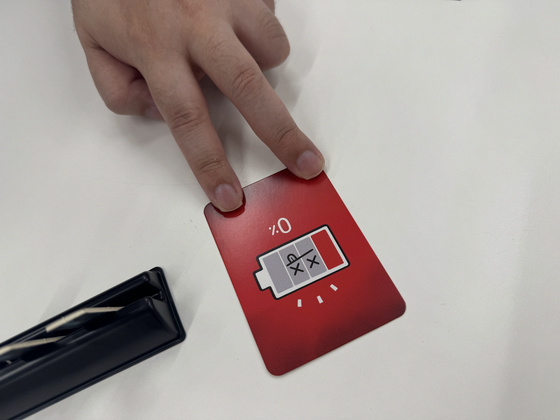
Normally, you can only specify one opponent's code, but with the Futsuno Detector, you can specify two at the same time. For example, below is a situation where you point out two cards that you know are 3 or less and say '2!' If either of the two cards you pointed out is correct, it will be considered correct, so the risk of getting it wrong is significantly reduced.
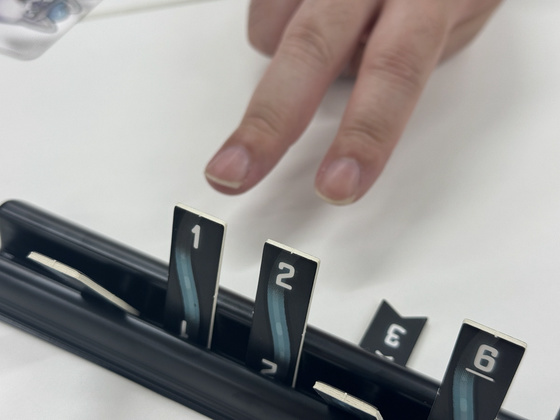
By guessing each other's cards in this way, the game was cleared once all the codes had been decoded. Since it was the first day of training, we had to go over the rules, but we were able to complete the game in about 20 minutes. The editorial staff who played the game commented with confidence, 'I've completely figured out how to defuse the bomb now,' and 'This should be a piece of cake.'
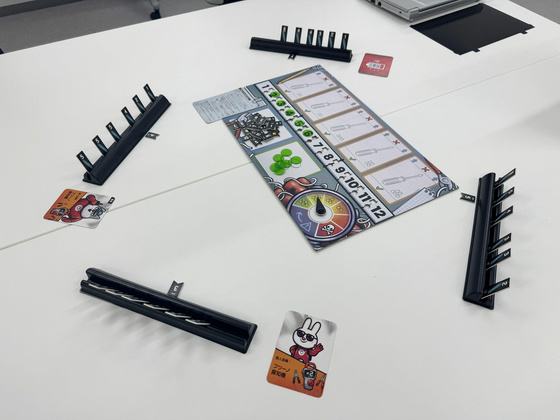
On the second day of training, yellow code tiles are added. There are 11 yellow code tiles, numbered 1.1 to 11.1. Two are randomly selected and shuffled with the blue code tiles. The yellow code tiles are odd numbers; for example, a yellow code tile with a '3.1' number will be placed next to a blue code tile with a '3.'
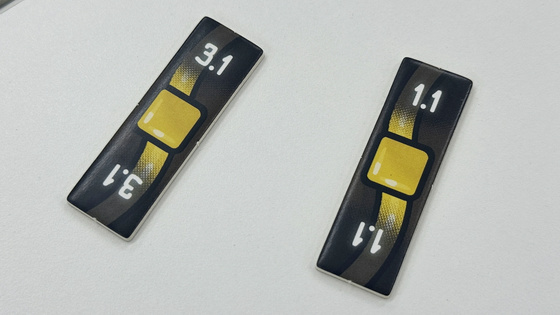
The size of the mixed yellow cord is indicated by placing a marker as shown below.
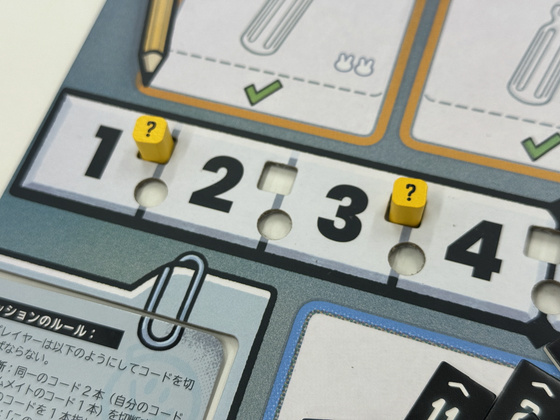
Yellow cords can be broken by either 'Cutting the Cord with Two Players' or 'Cutting the Cord with One Player.' In 'Cutting the Cord with Two Players,' the player holding the yellow cord must designate a yellow cord held by another player. In 'Cutting the Cord with One Player,' players must have two yellow cords in their possession. In order to clear the game, you must 'clear all the cords,' so you need to know who is holding the more difficult yellow cords and where they are.
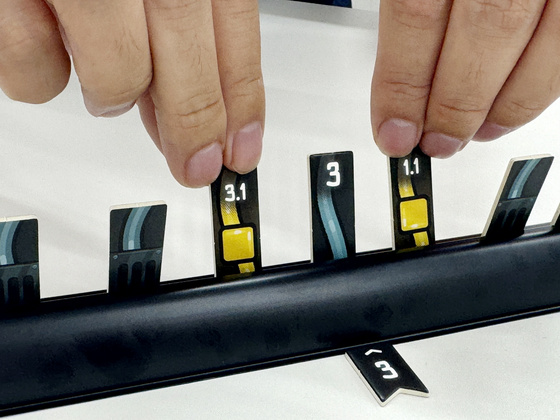
On the third day of training, red codes were added. If you make a mistake with a red code, it will result in an instant game over.

Red code is also mixed into the code tiles, with the code numbers indicated by markers.
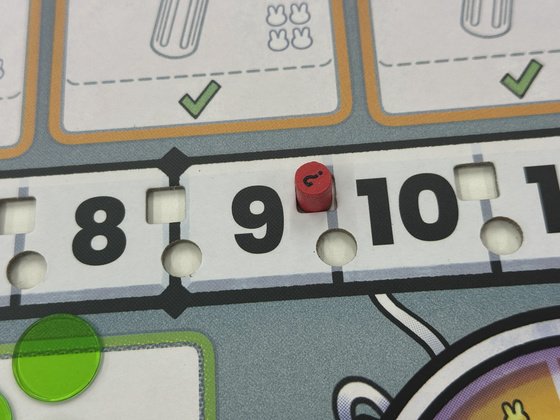
Basically, red cords cannot be removed. Therefore, players must be sure to avoid red cords. When all cards except the red cord are removed from the hand of a player who has a red cord, that player will reveal the red cord for the first time and end their participation in the game. In other words, the only way to survive is to cut off all cards except the red cord.
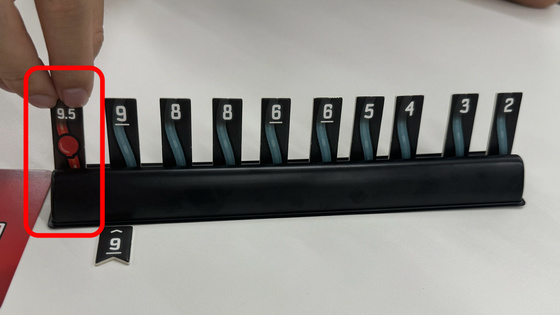
On the third day of training, players were also given the opportunity to use equipment cards, along with the red codes. Equipment cards, like the Futuno Detector, are tools that make bomb defusal easier through their special effects. The 12 equipment cards are shuffled and the same number as the number of players is placed on the board as shown below. However, equipment cards are not available from the start.
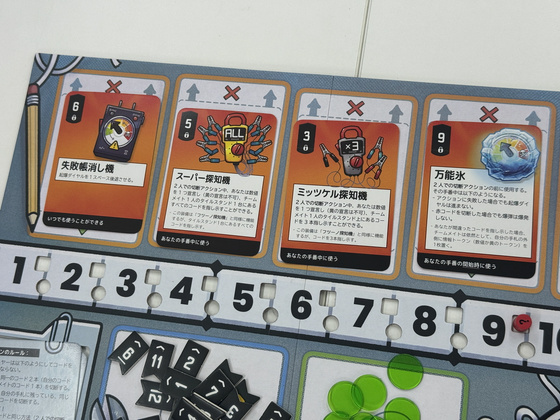
For example, the 'Super Detector' below has the number '5' drawn in the upper left corner. To use this Super Detector, you must cut at least two '5' cords. Once you have cut the cords and it is ready to use, slide the card up as shown below to display a check mark.
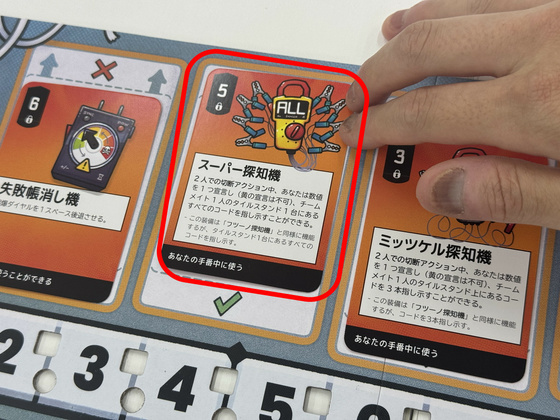
This Super Detector is an extremely powerful item that can target and identify all of the cards in your opponent's hand.
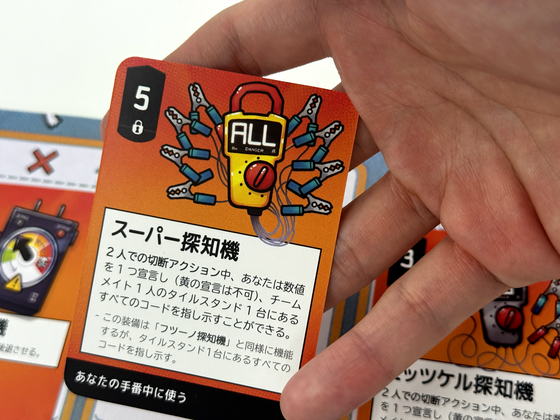
Once you use it, you can't revive it, so be sure to consult with other players before using it.
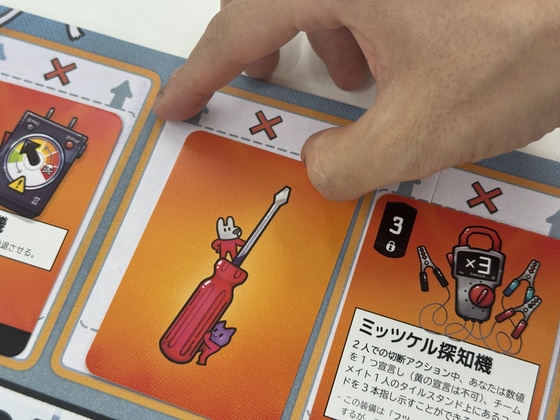
As you complete the training missions in order from day 1, you will gradually understand the rules. By the third day of training, you will be able to grasp all the basic rules, so you can proceed to mission 8 at once. This time, I will try mission 8.

Mission 8 is the 'final test,' and even with the basic rules, it is set to be more difficult than previous missions. In addition to all 48 blue code tiles, you must also get one of the two red code tiles and two of the three yellow code tiles.

During the preparation stage, you draw two red cords and three yellow cords, but when shuffling, only one red cord and two yellow cords are mixed with the blue cord tiles.
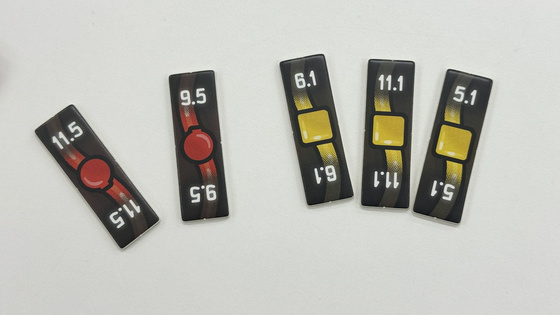
In other words, the red and yellow code tiles you placed markers on in the preparation stage may not necessarily be mixed in with your hand. You will need to deduce which red and yellow code tiles are mixed in with the blue code tiles by looking at your opponent's hand.
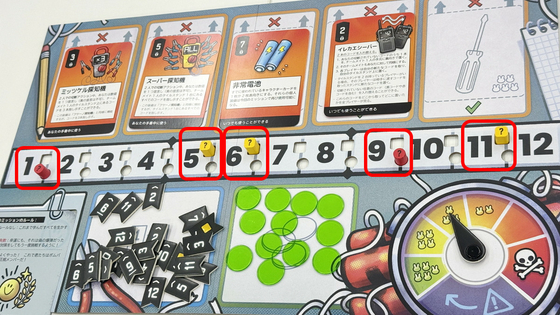
Furthermore, the number of codes has increased dramatically.

In any case, the information that is initially disclosed will be small compared to the number of code tiles that you don't understand, so you need to be prepared to make mistakes as you reveal information to your teammates.
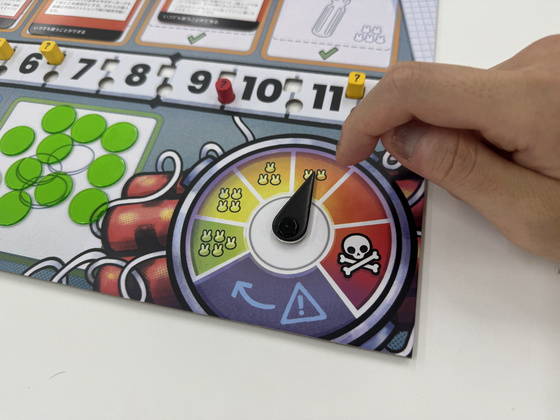
Of course, you'll also need to be good at using equipment cards. For example, the 'Irekae-Seiber' below allows two players to exchange their hands.
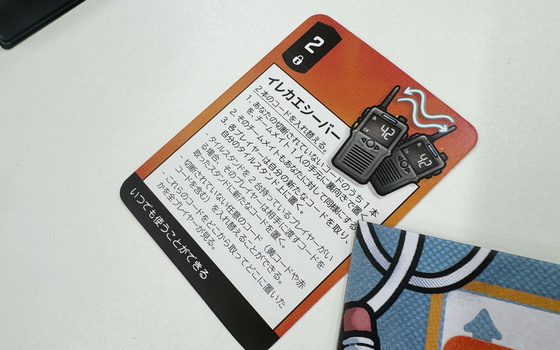
The code tile to be exchanged is passed to your opponent face down as shown below. At this time, the position of the code tile that was removed from your hand is revealed to everyone.
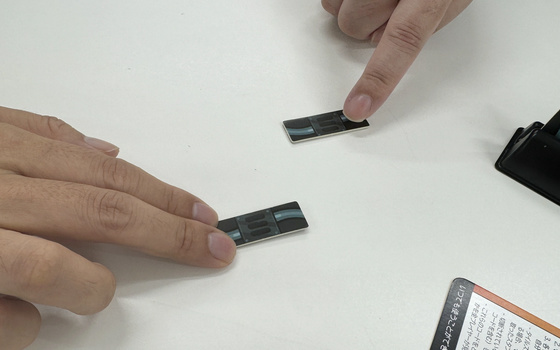
Then, each player adds the exchanged code tile to their own hand. Where each player places the exchanged code tile is also an important clue for deducing the opponent's hand.
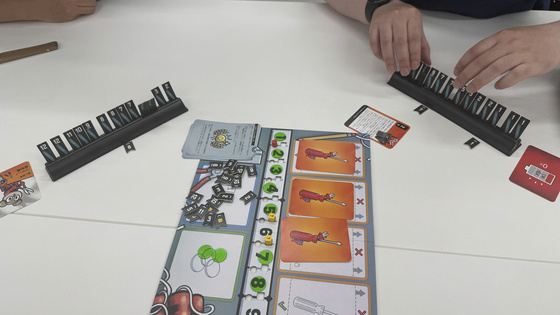
Also, the character card 'Futsuno Detector' can't be used again once it's been used, but this 'Emergency Battery' is a powerful item that can reuse up to two cards. This card can be used by cutting two 7 cords, so you need to think with your teammates about 'when to cut the 7 and use the 'Emergency Battery'.' However, since I can't give specific numbers, I decided to come up with a strategy like 'I want to be able to use the 'Emergency Battery' here.'
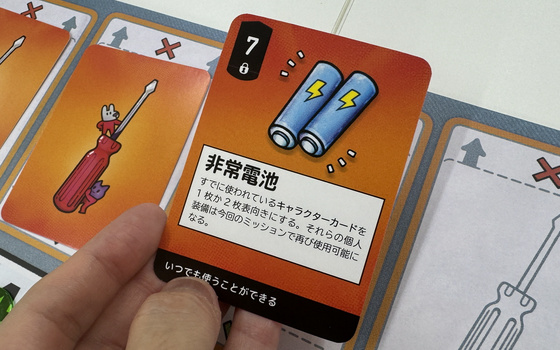
This strategy worked brilliantly, as we were able to revive the Futuno Detector towards the end of the game and successfully cut the final cord.
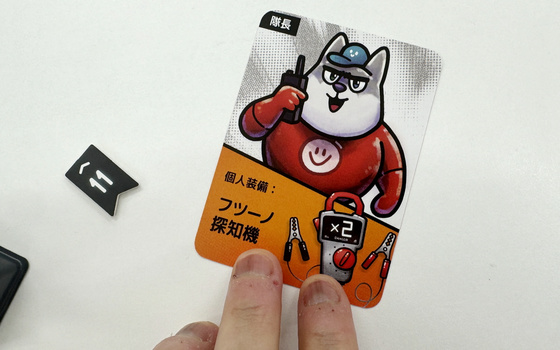
The rules of 'Bomb Busters' are simple, and the basic rule is to 'read your opponent's hand and guess.' Even people who are not used to playing board games can quickly understand and play. Since it is a cooperative deduction game, you want your teammates to guess the numbers on your hand, but you are not allowed to say specific numbers. Therefore, it is very important to consider which code tiles are in which positions in your hand, such as where to place information tokens and where to cut the code, and which ones to reveal. You need to consider 'how your hand looks to others,' making it a simple yet very deep game.
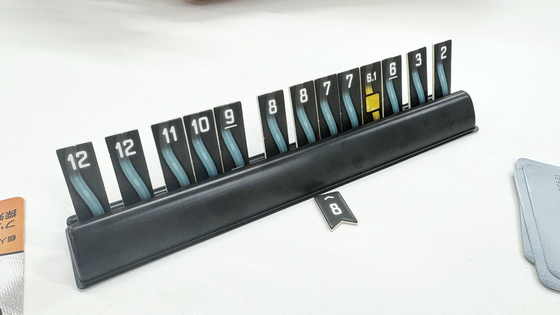
There are a total of 66 missions, including the first eight. This means you can play with a variety of rules, and the game has a wide range of possibilities. Each mission takes about 20 to 30 minutes, but it's very challenging, has high replayability, and the post-game discussions are exciting, giving the game a very satisfying feel.
Bomb Busters is priced at 6,050 yen. It is also available on Amazon.co.jp, but was out of stock at the time of writing.
Amazon | Bomb Busters Japanese Edition [Board Game] [Engames] [Engames] [Japanese Edition] | Board Games | Toys
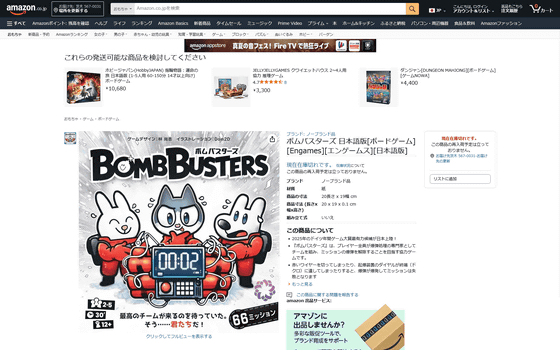
You can also get Bomb Busters from the gift article below.
GIGAZINE Summer gift release project 'Answer the questionnaire and take them all!' - GIGAZINE

Related Posts:







